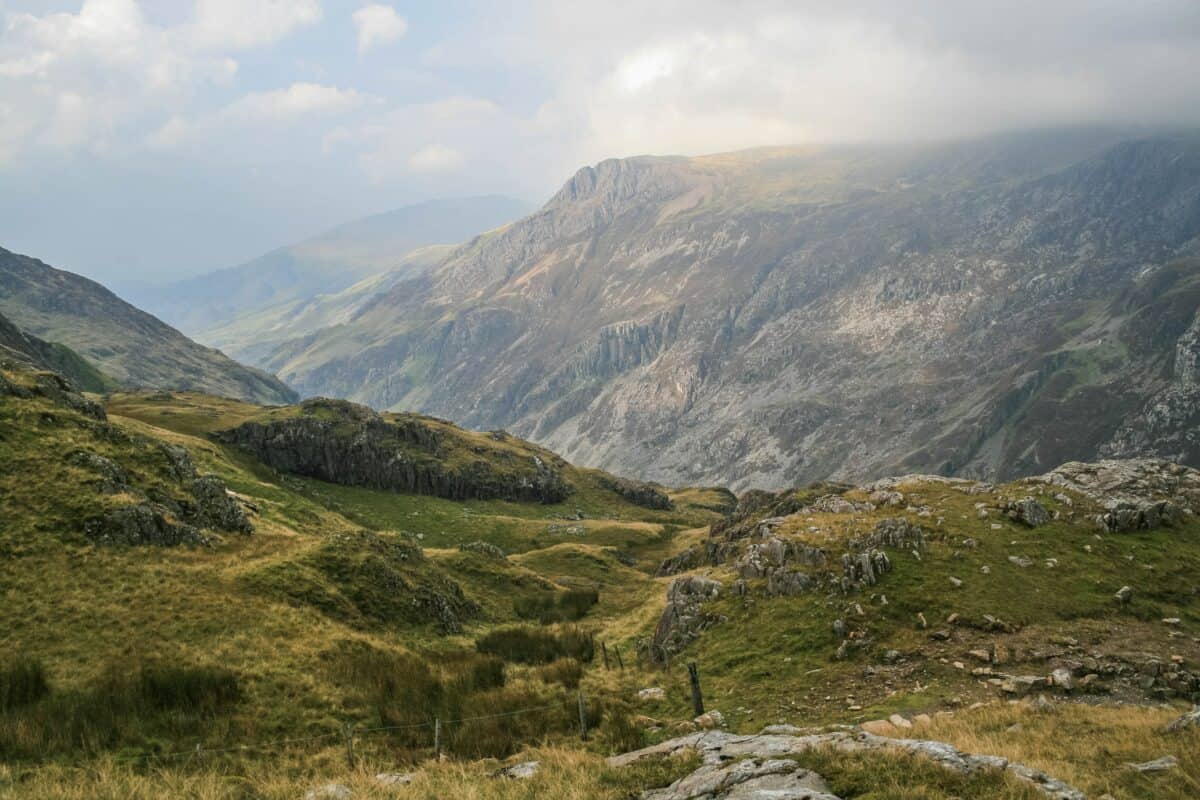With its pristine lakes, cascading falls, tumbling rivers, and craggy mountains, Snowdonia is a genuine natural wonderland and one of Britain’s most picturesque regions. The best way to soak up this richly varied landscape is by finding a quiet, secluded spot, pitching your tent, and taking in the unforgettable sights, smells, and sounds.
Here’s everything you need to know about the best wild camping locations in Wales’ biggest and most famous National Park:
Is Wild Camping in Snowdonia Legal?
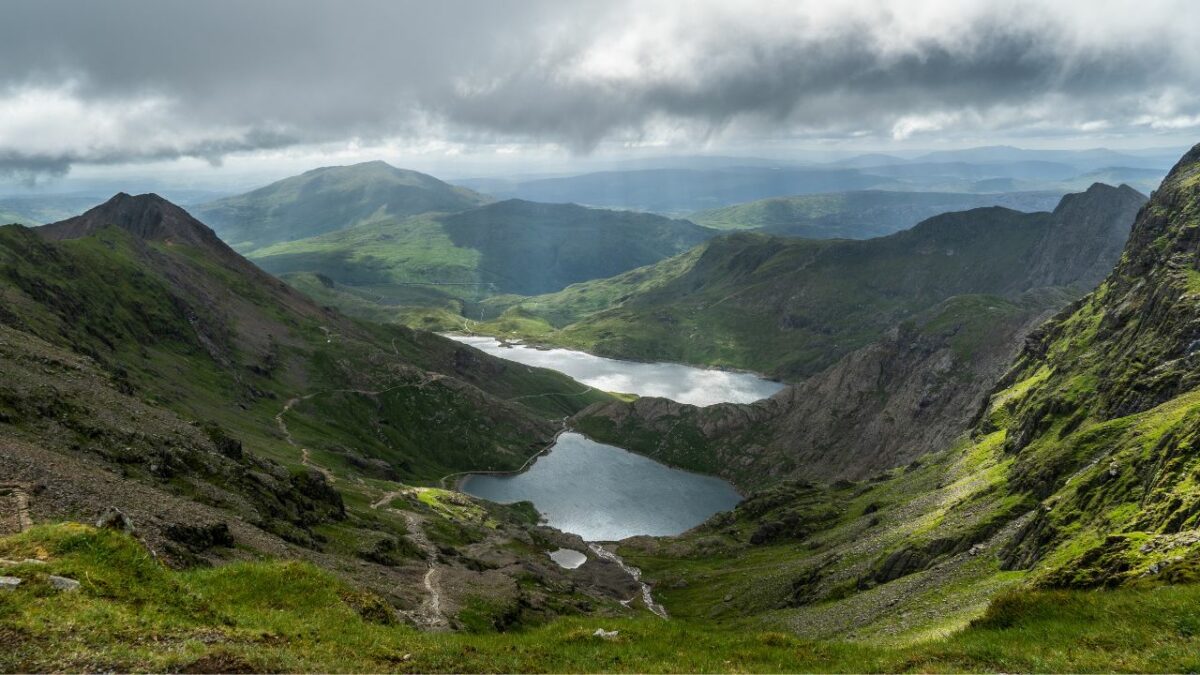
In Wales and England, wild camping is prohibited without the landowner’s permission. In other words, one cannot just hike around Snowdon, find a suitable camping spot and pitch a tent. The stay must be planned in advance, including obtaining the landowner’s permission.
Landowners usually grant the right to camp if you agree to their terms, but you must also follow some broader rules (more on that below). That said, most wild campers coming to Snowdonia don’t bother with the “getting the permission” business, and the reason behind this is relatively simple. If you don’t damage anything and stay out of sight, nobody will give you a rough time for pitching a tent without permission.
Map of Wild Camping Areas in Snowdonia
You can easily find the locations of the best wild campsites in Snowdonia using this map.
The Best Wild Camping Spots in Snowdonia
Rhinogydd
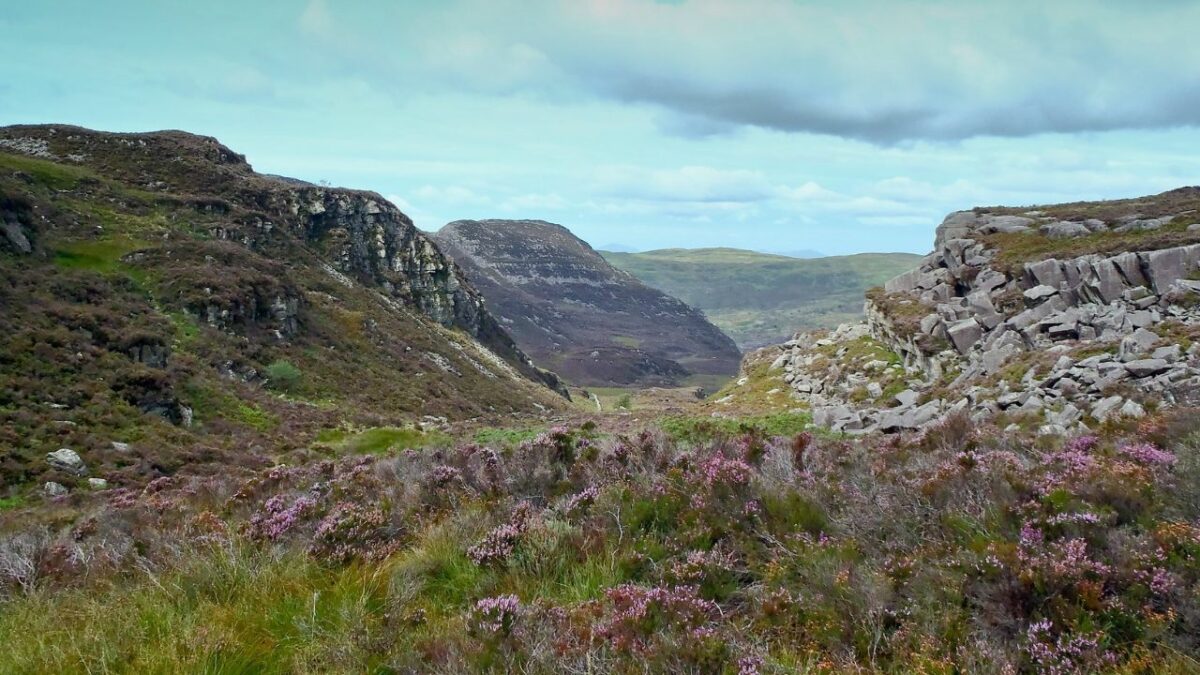
One of the most often-overlooked parts of the Snowdonia National Park is Rhinogydd (also known as the Rhinogs), a mountain range in the south-central region of the park. These heather-covered peaks are about as remote as this part of Wales gets. As such, they’re an excellent destination for wild campers looking for ultimate isolation.
The best place to camp in the Rhinogs is at the shores of the mountain lake Llyn Du (see the map above). Situated beneath Rhinog Fawr, the lake can be relatively easily accessed up the Roman Steps (once used by packhorses) from Llyn Cwm Bychan. If you want even more isolation, head further north – you’ll have plenty of hills and small mountain lakes all to yourself.
Those who find the ruggedness of Rhinogydd daunting will appreciate that they can stay at Cwm Bychan’s “nearly wild” campsite. It’s a basic campground in every sense of that term: just a large field without any amenities or facilities.
However, it provides plenty of parking space and features multiple fire pits, allowing campers who bring firewood to enjoy evening campfires. The lack of running water is made up for by the campsite’s proximity to a river – you can collect some water there and then boil or filter it.
Carneddau
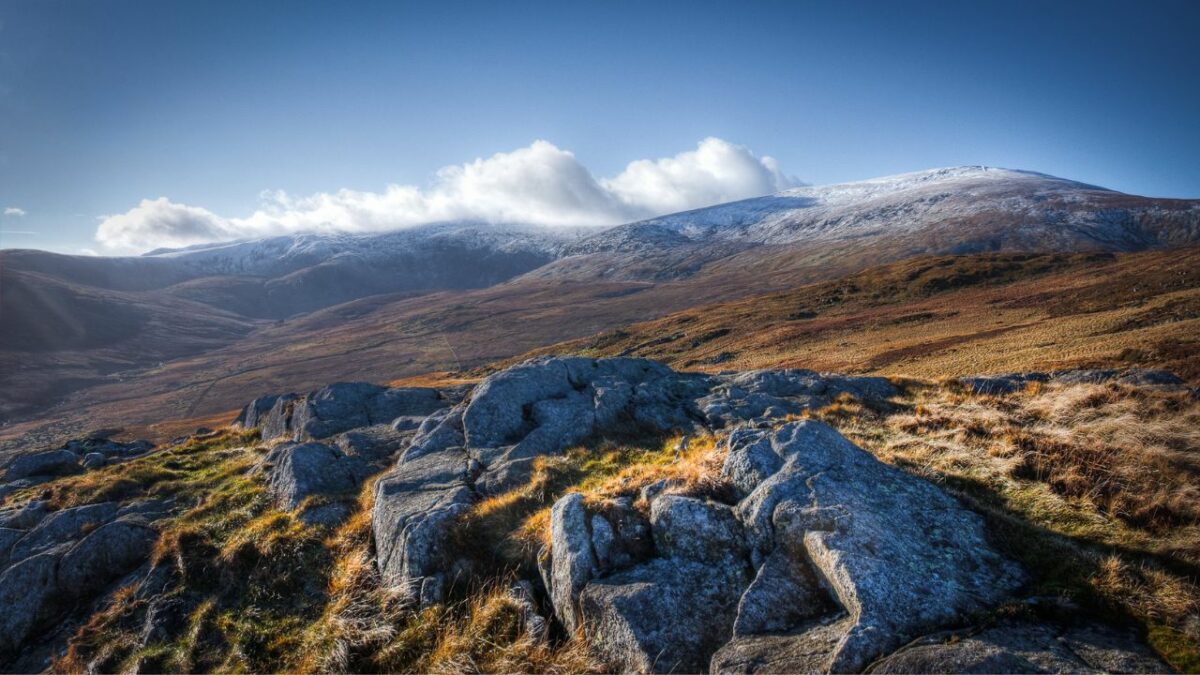
Featuring almost 20 peaks over 600 metres high, the Carneddau (also known as Carnedds) range is of the UK’s highest regions of upland ground. This area is ideal for wild campers because it’s typically much quieter than the Glyderau, a neighbouring – and much more popular – mountain group.
The Carneddau range has a very wild feel, offering breathtaking views at every turn and featuring ponies roaming free across the hills. Excellent tent-pitching spots can be found in pretty much every corner of the region, but the best one is the northern shore of Llyn Dulyn. Alternatives include Dulyn Bothy and Llyn Melynllyn.
A good thing here is that all three of these places – Lllyn Melynllyn, Lllyn Dulyn, and Dulyn Bothy – are close to each other. The bothy is an ideal place to stay in case of bad weather: it is well-maintained, well-stocked, and has a fireplace for folks who bring some coal or wood in their backpacks.
In case of clear skies and settled weather, I recommend hiking to the summits at the range’s northern end. There, you will find plenty of excellent wild camping spots with views stretching all the way northwest to the island of Anglesey.
Glyderau
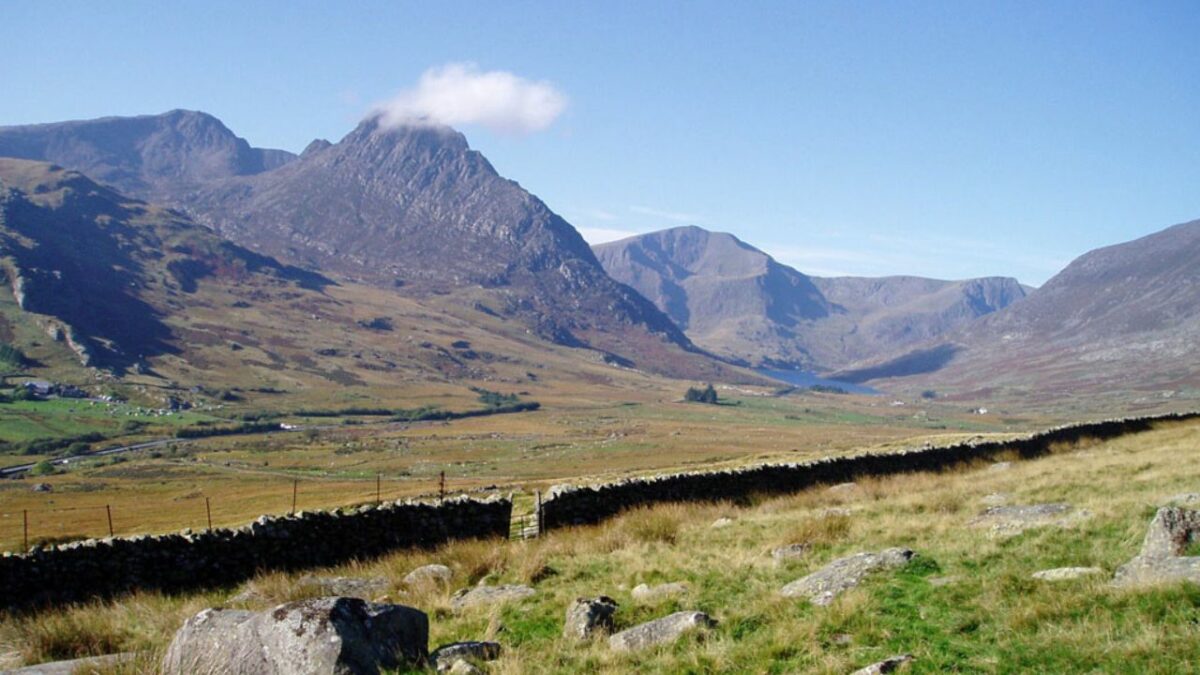
Featuring five of Wales’ fifteen “three-thousanders”, the Glyderau Range offers some of the most breathtaking views in the entire National Park. An estimated half a million outdoor enthusiasts visit this magnificent region annually, including hikers, climbers, and campers.
One of the best wild camping locations here is the wilderness around the dramatic peaks of Glyder Fawr and Glyder Fach. The area resembles the moon’s surface with its jagged, crumbling rock formations and boulder-strewn terrain. Pitching a tent here can be challenging – you’re better off sleeping in a bivvy bag.
If you’re looking for a more forgiving wild camping area in Glyderau, consider camping along the eastern peaks of the range. Another good option would be to stay at Llyn Caseg Fraith, one of the park’s most beautiful mountain lakes, located 1.3 miles south of Llyn Ogwen.
Those who decide to wild camp at Llyn Caseg Fraith should do so away from its shores – the ground immediately around the lake can be very boggy. Find a grassy patch a bit further from the water, pitch your tent, and enjoy incredible views of the majestic Tryfan – one of Britain’s most recognisable peaks.
Moelwynion
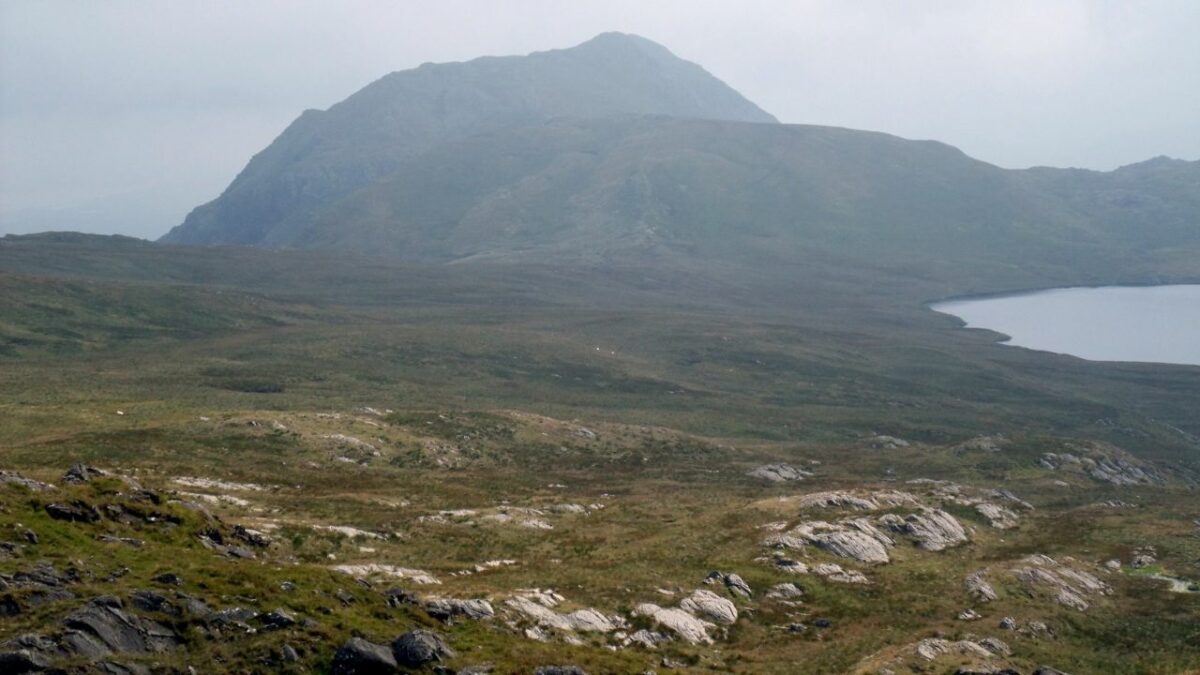
Like Rhinogydd, Moelwynion is yet another of Wales’ often-overlooked mountain ranges. Situated in central Snowdonia, this group of striking mountains is generally swampy (particularly on the Nantgwynant side) but still full of phenomenal wild camping spots.
The peaks of Moelwynion include Moelwyn Bach and Moelwyn Mawr, both prominent in the park’s slate-mining history. However, none is as popular with outdoor enthusiasts as Cnicht – a 2,260-foot-high mountain nicknamed the “Welsh Matterhorn”.
The easiest way to reach Cnicht is from the south, i.e. from the tiny hamlet of Croesor. Leave your vehicle there and walk north towards the mountain. You will have two options: pitching your tent on the mountain’s slopes or staying at one of the many disused quarry buildings or llyns (lakes) you will pass along the way.
The Ordnance Survey map for this part of Snowdonia also highlights a cave at the shore of a small lake just west of Cnicht. It makes for a memorable wild camping stay – it’s a snug shelter made up of fallen slabs that can accommodate two people in bivvy bags.
Cadair Idris
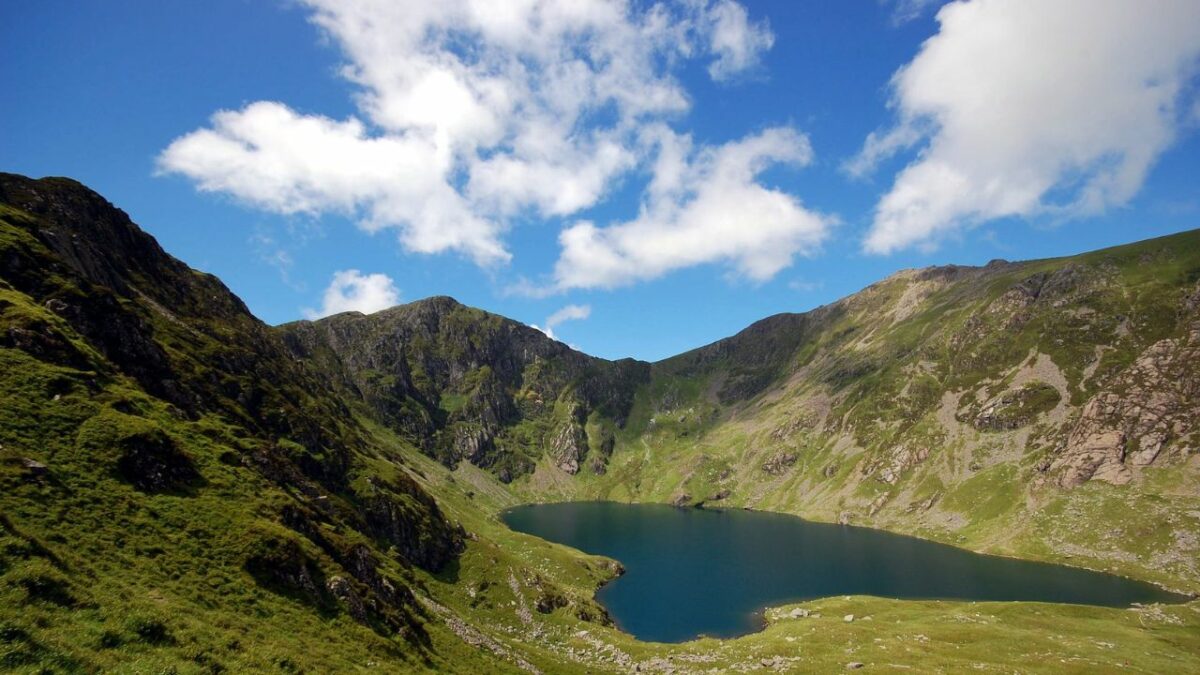
Most hikers and campers are drawn to Snowdon and the surrounding region, but Southern Snowdonia is also worth visiting. After all, the southern part of the National Park features the magnificent Cadair Idris, which is only 70 feet short of being a “three-thousander” (the height of its peak – Penygader – stands at 2,930 ft).
Featuring plunging gorges, craggy summits, and ice-covered lakes, the landscape of Southern Snowdonia is just as captivating as that of the northern part of the National Park. Be careful while camping in the area, though – the legends say that those who sleep on the slopes of Cadair Idris will wake up as madmen. They also say that some of the surrounding lakes are bottomless.
Two of the best places for wild camping near Cadair Idris are Llyn y Gadair and Llyn Cau. Both are glacial lakes – the former is located just north of the mountain, while the latter can be found on its southern slopes. Both lakes are very photogenic and ideal for tent-pitching.
Another thing worth mentioning here is that three excellent campsites can be found less than 5 miles north of the mountain. Located on the shores of the Afon Mawddach River, Cefn Coed, Graig Wen, and Bwlchgwyn Farm Campsite feature facilities that all wild campers long for once they get tired of sleeping in tents and bathing in creeks.
Llyn Edno
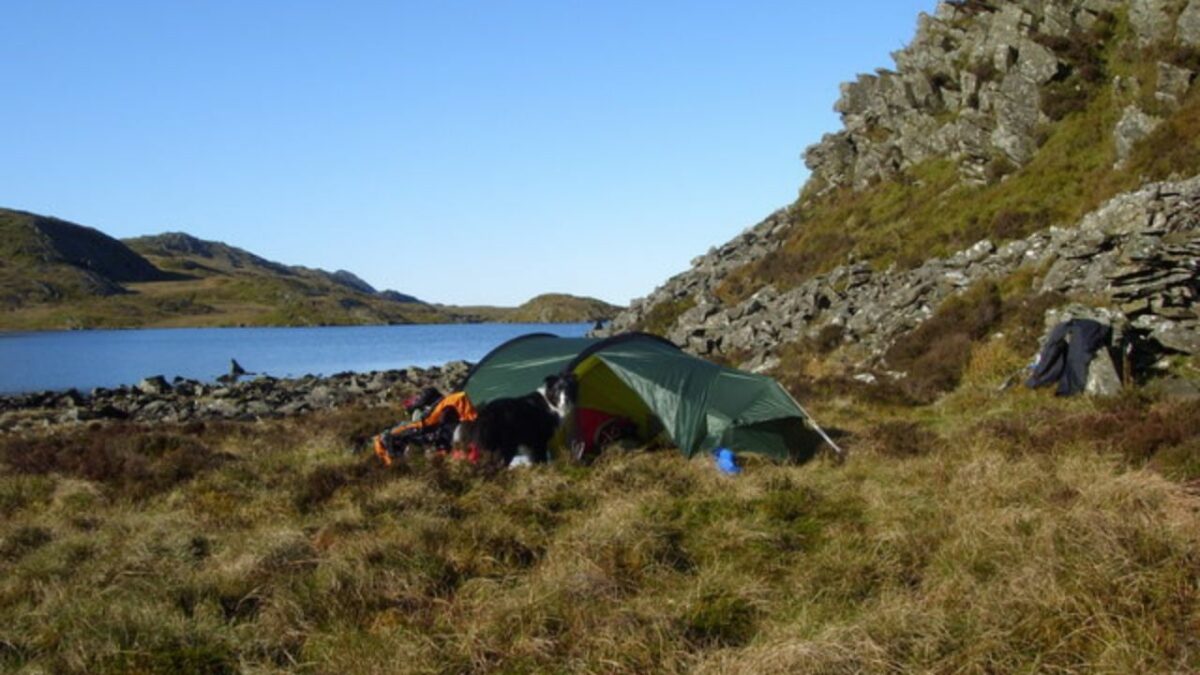
Another excellent wild camping destination in Snowdonia is Lllyn Edno, a mountain lake a mile and a half south of the much more popular Llyn Gwynant. Since it’s relatively shallow, the lake is a fantastic destination for campers looking to spice up their adventure with wild swimming.
Llyn Edno can be approached from several directions, the most accessible from the north (from the aforementioned Lyyn Gwynant). You will, however, have to be careful when approaching the lake – the surrounding area is quite boggy.
The landscape around the pond looks like a tamed-down version of Rhinogydd – the environs are abundant with heather. There are also a lot of ridges and small hills, so you should be able to find a suitably sheltered and flat spot to pitch your tent easily.
I recommend camping on the western or the southern shore of the lake. Not only is the ground less boggy there, but you’ll also have a stunning view of Moel Siabod – the highest peak in the Moelwynion range – directly across the lake.
Snowdon
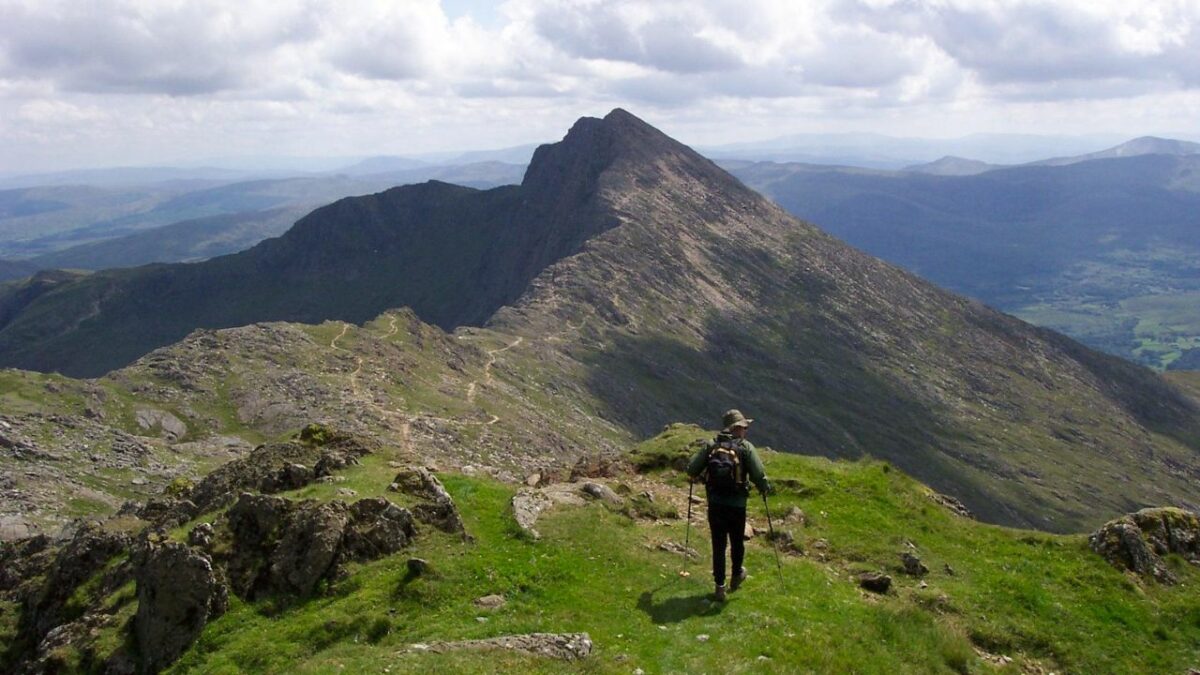
Many outdoor enthusiasts come to the national park with the specific purpose of summiting the highest mountain in Wales – Snowdon (Yr Wyddfa). However, this is one of the busiest places in the whole of Snowdonia: there’s a train station taking tourists up and down the mountain and a large cafe at the summit.
As a result, wild camping on the mountain is much trickier. While it’s true that many campers pitch their tents next to the glacial lakes around Snowdon, I do not recommend doing so. The area is bustling, and staying near one of the lakes means drawing attention to yourself.
On the other hand, camping on the summit can be rather tricky in a tent. Your best bet is to spend a quiet night bivvying – set up camp as late as you can and leave with the first light. Remember that there are more night hikers on Snowdown than ever and camping that high up means being very exposed.
Also, remember that you can still make it up and down the mountain within a day if you camp nearby. A good idea would be to follow the Beddgelert Forest Trail – west of Snowdown and opposite the road where most of the tracks ascending the mountain start – and pitch a tent at one of the neighbouring peaks.
Llyn Eigiau
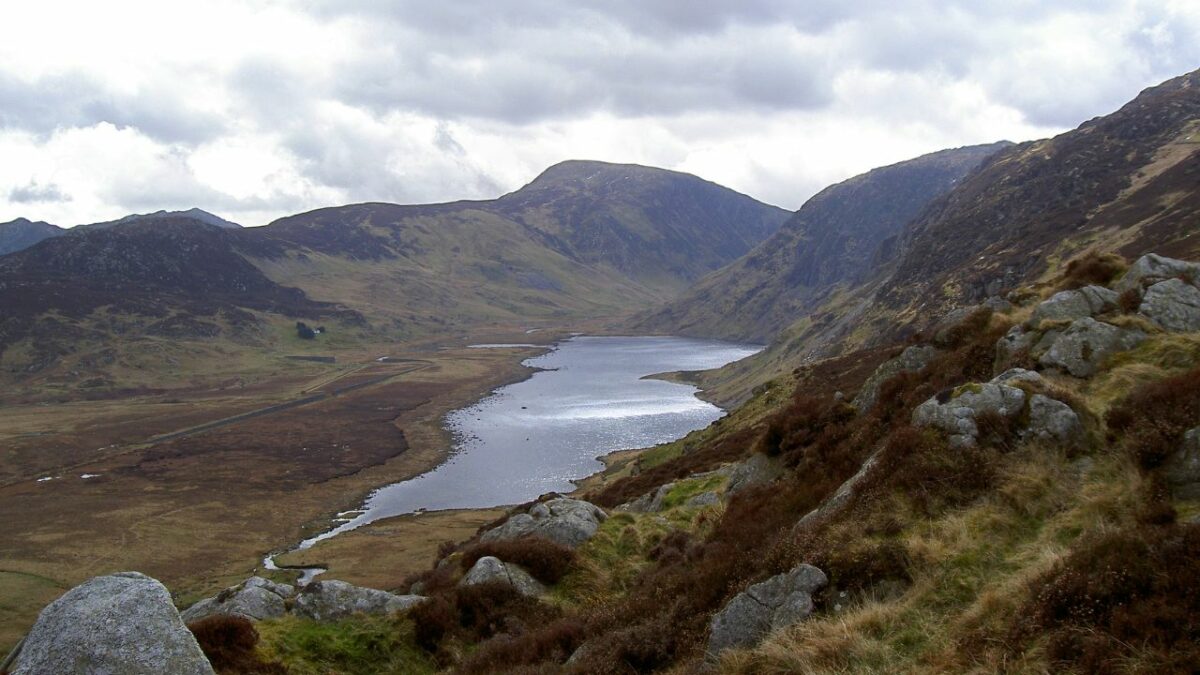
There are abundant picturesque glacial lakes on the eastern side of Carnedd Llewelyn, the second-highest peak in Wales. While each provides spectacular surroundings for wild camping, the best one is Llyn Eigiau, located less than two miles east of the peak.
The lake itself cannot be accessed by private vehicles. However, campers can leave their cars at a parking lot less than half a mile from the dam. To reach the dam from B5106, take a left (if you’re coming from the south) or right (if you’re coming from the north) at the village of Tal-y-Bont.
Passing through the village of Llanbedr-y-Cennin, the route quickly becomes very narrow as it crosses the hills towards Llyn Eigiau. As you drive down to the lake, you’ll notice plenty of hiking opportunities in the area. An old stone wall runs parallel the route, with a few signposted openings with stairs to access public footpaths.
Once you leave your vehicle at the parking lot, head to the lake and find a suitable location to set up camp. The landscape around Llyn Eigiau is rocky and boggy in places, but you should be able to find a flat spot with great views to pitch your tent easily.
Ffynnon Caseg
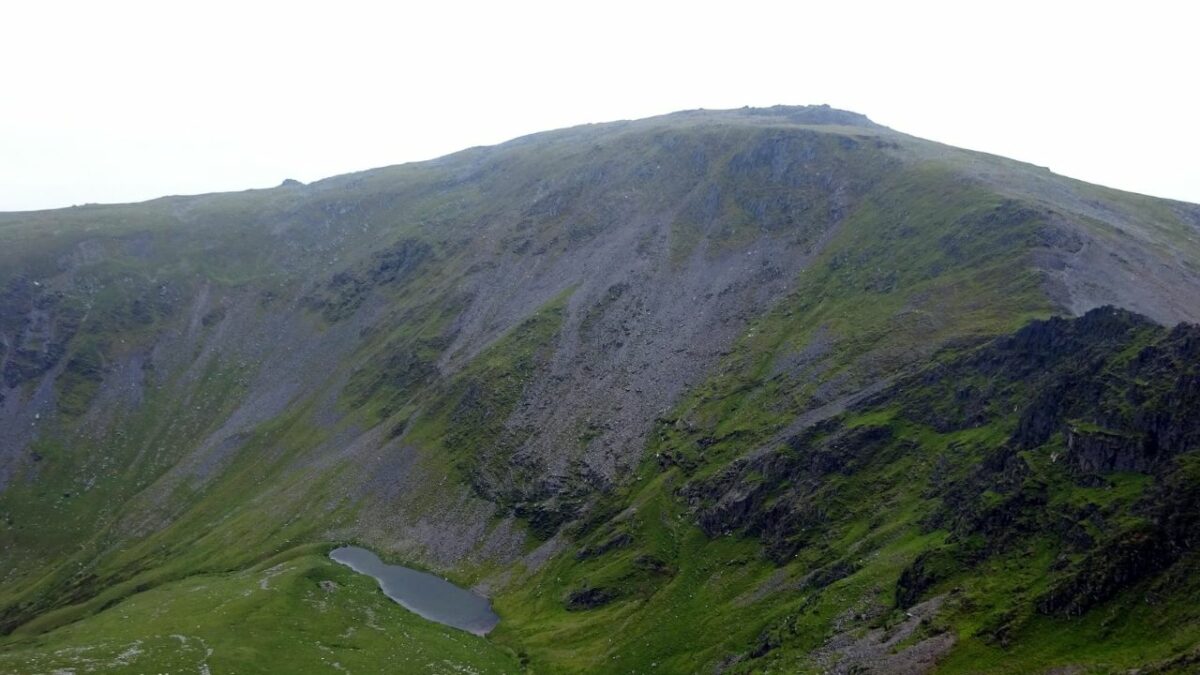
Ffynnon Caseg, also known as Cwm Caseg Tarn (“a lake lying in the Caseg valley”), is a small mountain lake on northern Snowdonia’s periphery. Despite being barely larger than a pond, this tarn is a phenomenal wild camping destination due to its isolation – it is surrounded by tall mountains on all sides.
The easiest way to reach Ffynnon Caseg is from the northwest, i.e., Bethesda – a town on the edge of the National Park. Leave your vehicle there and head towards the lake by following visible vehicle tracks until you reach a group of old goat pens.
Once there, take a right, and you’ll find yourself in the stunning glacial valley of Cwm Caseg. From then on, you must only follow one of the numerous goat tracks – all lead directly to the lake. The final stretch of the walk is bound to lift your heart rate, as it is much steeper than most hiking maps suggest.
The best place to set up camp is at the lake’s southern shore. It is covered by soft grass – and, therefore, dry and flat – and provides breathtaking views of the surrounding landscape. While camping here, you will have a plentiful supply of water. Although some wild campers claim that the water from the lake is potable, I’d recommend using a filter or a disinfectant just to be safe.
The Ogwen Valley
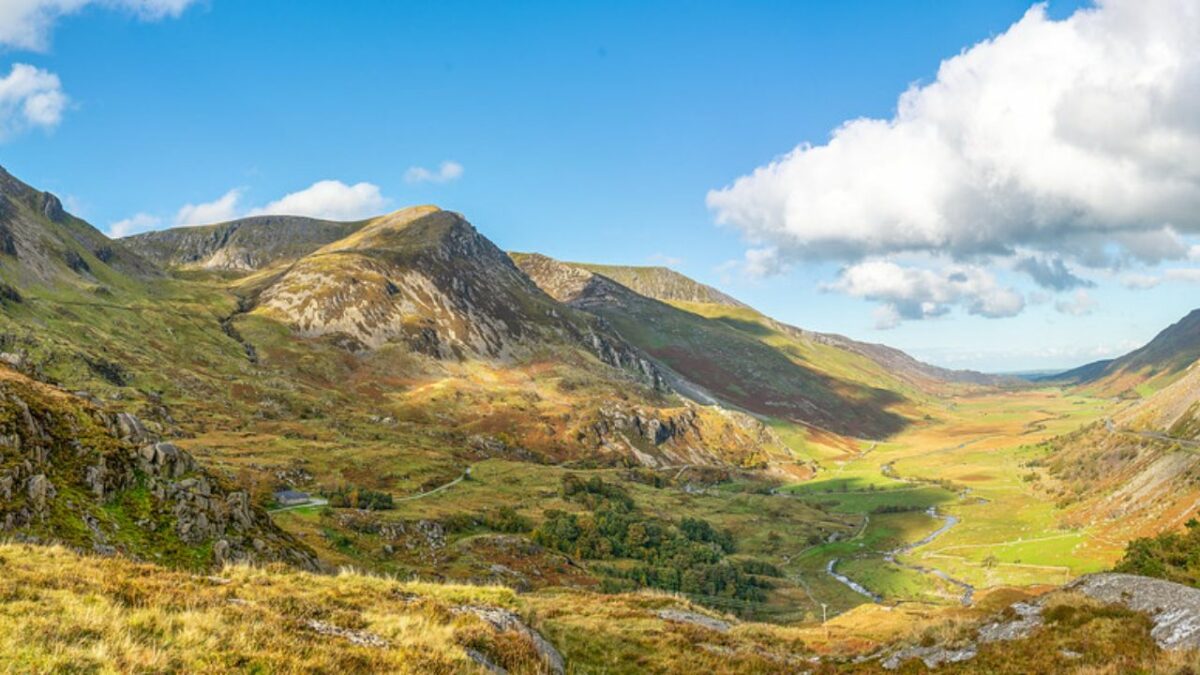
Named after the river running through its centre, the Ogwen Valley is one of the most picturesque parts of northern Snowdonia. The valley’s landscape is genuinely stunning – the towering peaks of the Glyderau and Carneddau ranges rise steeply on both sides.
In addition to its stunning natural landscape, the valley has a rich history and mythology. History buffs who enjoy the outdoors can learn about the slate mining industry that once thrived here or wander the ruins of an ancient castle that used to dominate the region. As for mythology, legends say that a mighty hero called Llewelyn defeated Yr Wyddfa, a fierce dragon, right in the middle of the valley.
Ogwen provides a wealth of opportunities for camping, climbing, and hiking. Those interested in wild camping should head straight to Llyn Ogwen – an idyllic, crystal-clear lake fed by the rivers and streams of the Carneddau and Glyderau.
One of the most significant benefits of camping here is that you’ll never be too far from civilisation, although some might see this as a disadvantage. A small cafe on the lake’s western side has toilets and plenty of parking spots.
For more awesome wild camping spots in Wales, see our list of the best wild camping spots in the Brecon Beacons National Park.
Snowdonia Wild Camping Rules

- Choose your wild camping spot wisely and avoid moving stones, trampling plants, and digging trenches just to accommodate your tent.
- Camp off the beaten track and, if possible, at a higher altitude. Stay as far away from farms, roads, and buildings as possible.
- Keep your impact to a minimum by staying only one night. To minimise your visual presence, pitch your tent late in the evening and leave early.
- Only camp with up to two tents. The tents must blend in with the scenery, i.e. be unobtrusively coloured.
- Don’t use rivers, lakes, or creeks for washing up with non-eco-friendly detergents. Instead, use a small container and dispose of the contents far from bodies of water.
- If the landowner asks you to move, just do it – don’t make a scene.
- Leave no rubbish. Pack up all the litter – including food scraps – and take it away.
- Answering the “call of nature” should be done at least 30 metres from any paths or bodies of water. Bury the waste, but not the toilet paper: take it away with you just like the rest of the litter.
- Use a gas stove for cooking. Do not light any fires.
When is the Best Time to Wild Camp in Snowdonia?
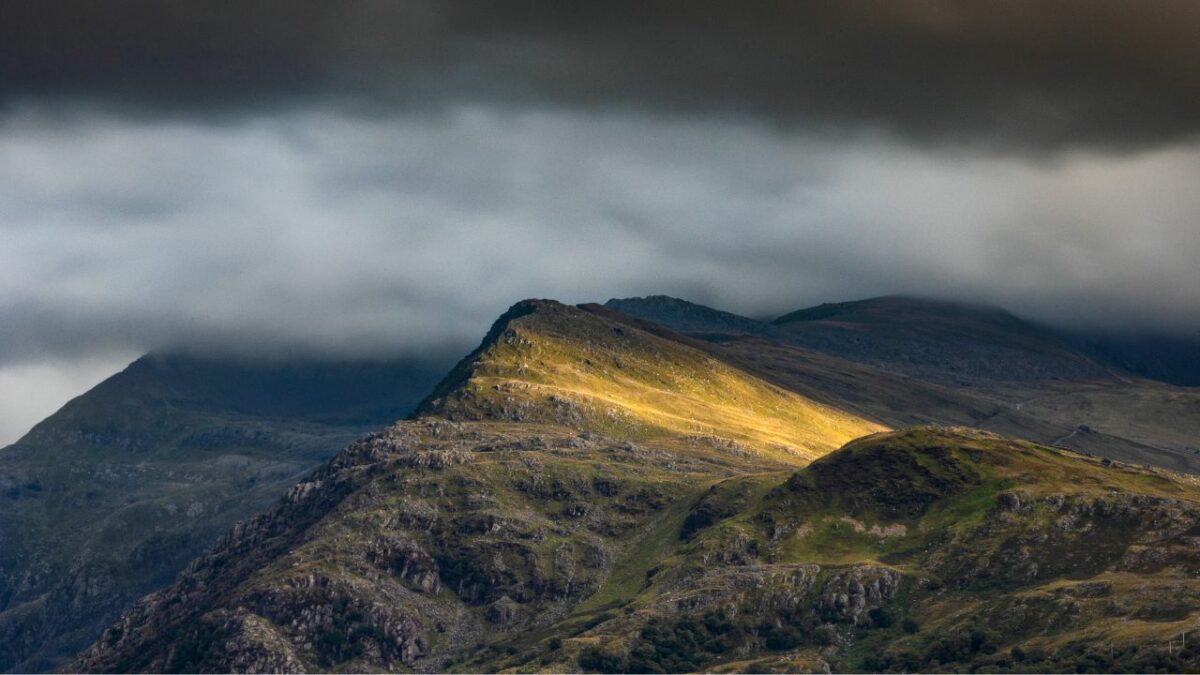
While you can wild camp in Snowdonia year-round, this National Park is primarily a summer destination. You can expect settled, sunny weather and longer days during the summer.
Consider camping in September or October if you’d like to avoid crowds. There won’t be as many visitors, and the weather will remain relatively pleasant.
Where to Base Yourself in Snowdonia
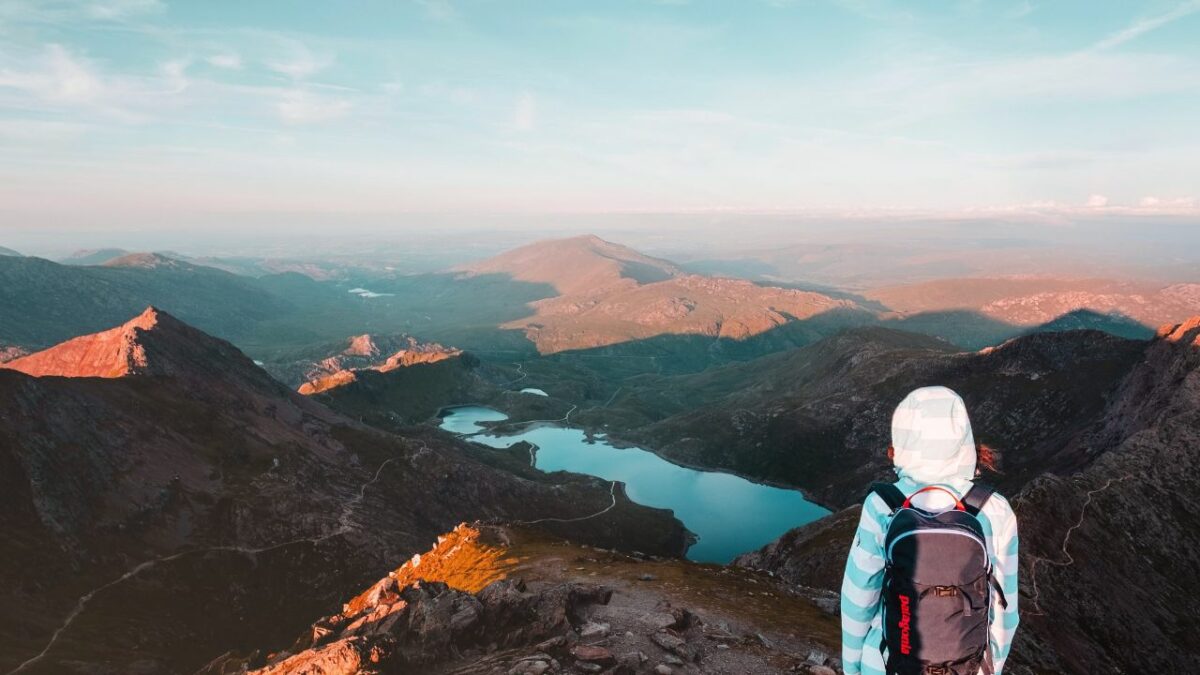
Here are some places that you can use as a base for your wild camping adventure in the National Park:
- Betws-y-Coed – Accessible by train, Betws-y-Coed is a bustling town with many camping supply shops, hotels, and restaurants. Consider staying at Eagles Bunkhouse.
- Llanberis – This small village in northern Snowdonia boasts some interesting attractions, like the lakeside railway and slate mine tours. An excellent place to stay is the Glyn Peris Guest House.
- Blaenau Ffestiniog – Once a slate mining centre, this small town has easy rail access. Consider staying at Pisgah Guest House.
Where to Next?
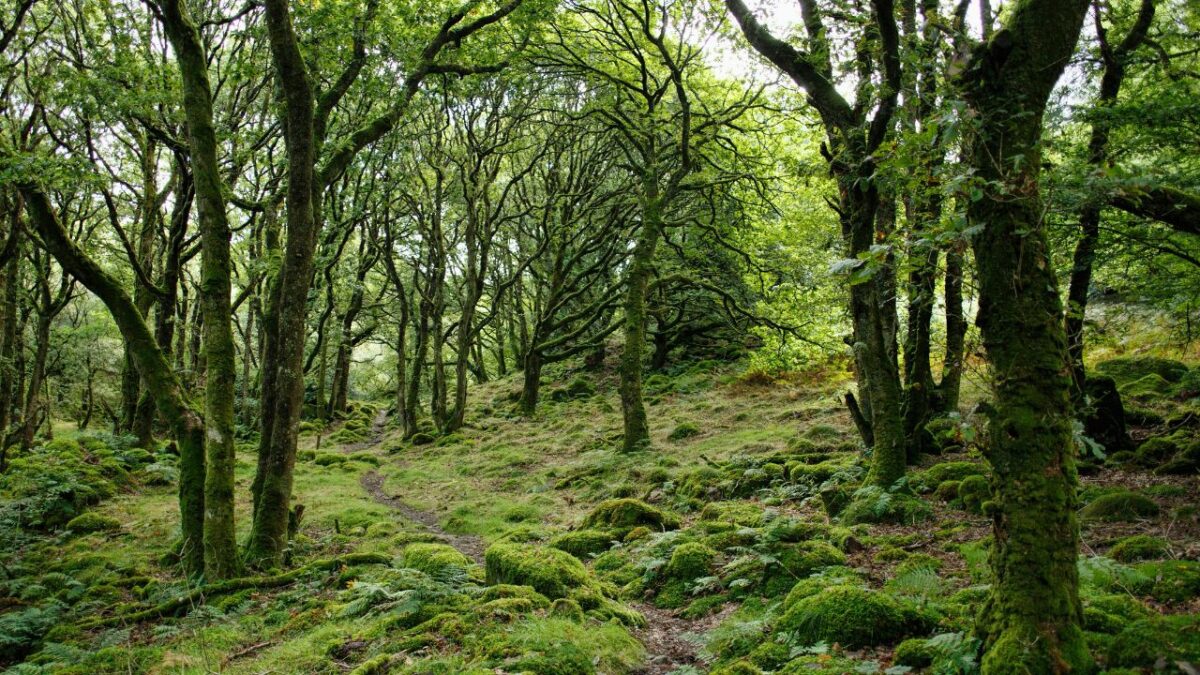
As gorgeous as it is, Snowdonia is just one of Wales’ numerous top-rated outdoor destinations. Learn about the best of the rest in my ultimate guide to wild camping in Wales.

I love hiking, backpacking, and camping. From the Camino de Santiago to the West Highland Way in Scotland or simply a great day hike on the weekend. Hiking refreshes me, my mind, and keeps my body reasonably fit. So far I have walked three Camino routes and many other long distance hikes in the UK, Canada, and around the rest of Europe. One of the best was my hike up Ben Nevis.

